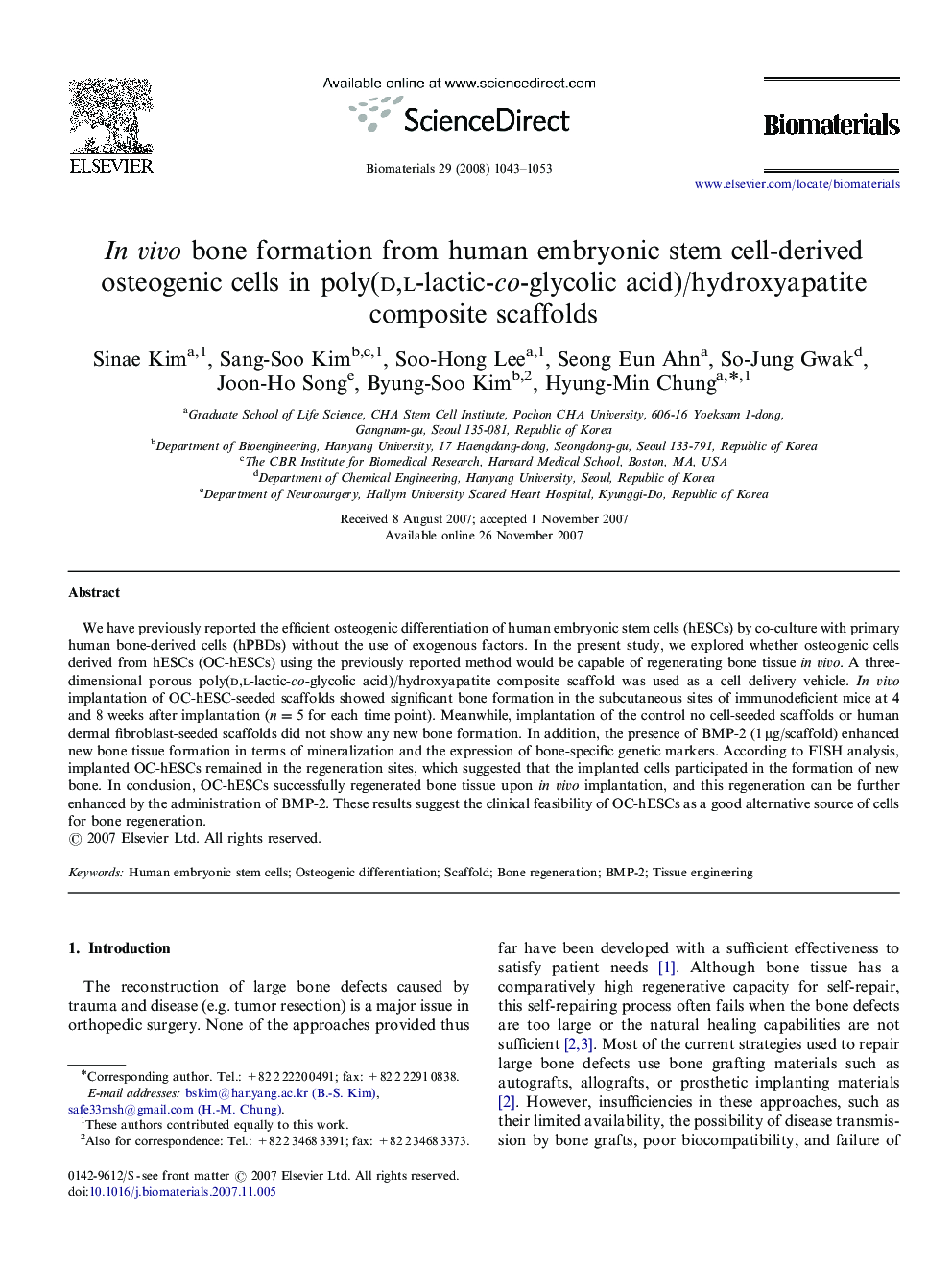| Article ID | Journal | Published Year | Pages | File Type |
|---|---|---|---|---|
| 11255 | Biomaterials | 2008 | 11 Pages |
We have previously reported the efficient osteogenic differentiation of human embryonic stem cells (hESCs) by co-culture with primary human bone-derived cells (hPBDs) without the use of exogenous factors. In the present study, we explored whether osteogenic cells derived from hESCs (OC-hESCs) using the previously reported method would be capable of regenerating bone tissue in vivo. A three-dimensional porous poly(d,l-lactic-co-glycolic acid)/hydroxyapatite composite scaffold was used as a cell delivery vehicle. In vivo implantation of OC-hESC-seeded scaffolds showed significant bone formation in the subcutaneous sites of immunodeficient mice at 4 and 8 weeks after implantation (n=5 for each time point). Meanwhile, implantation of the control no cell-seeded scaffolds or human dermal fibroblast-seeded scaffolds did not show any new bone formation. In addition, the presence of BMP-2 (1 μg/scaffold) enhanced new bone tissue formation in terms of mineralization and the expression of bone-specific genetic markers. According to FISH analysis, implanted OC-hESCs remained in the regeneration sites, which suggested that the implanted cells participated in the formation of new bone. In conclusion, OC-hESCs successfully regenerated bone tissue upon in vivo implantation, and this regeneration can be further enhanced by the administration of BMP-2. These results suggest the clinical feasibility of OC-hESCs as a good alternative source of cells for bone regeneration.
